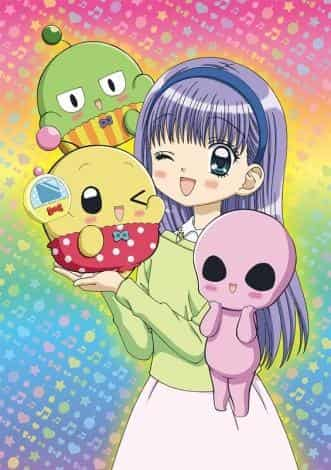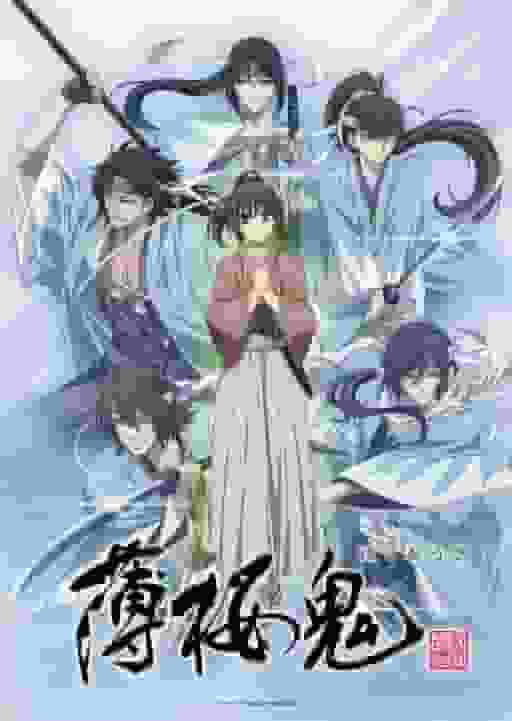The appeal and reputation of kite flying: A complete account of the kite flying commotion

Kite Fighting - The Appeal and Historical Significance of the 1936 Animated Film■ Public Mediatheater ■ Original MediaAnime Original ■ Release date1936 ■ Number of EpisodesEpisode 1 ■ Production・Produced by All Kinema ・Produced by Kiyoji Nishikura ■ Story At a kite-flying contest in Animal Village, a little rabbit is pulled into the sky by a kite. The whole village rushes to his rescue after hearing an SOS from a raccoon dog. The little rabbit gets up to the clouds and is saved by thunder, but he loses his footing and falls to the ground. A lion chases him, but because he falls, he jumps over the lion and falls into the valley below. ■Explanation The third installment of the Little Rabbit series. ■ Main staff・Produced by All Kinema ・Produced by Kiyoji Nishikura The appeal and reputation of kite-playing"Kite Fighting," released in 1936, is one of the most notable pre-war Japanese animation films. This work was produced as the third in the "Little Rabbit" series, and had a great impact on children at the time. Below, we will take a closer look at the appeal and evaluation of this work. The appeal of the storyThe story of "Kite Fest" is set at a kite-flying competition in Animal Village. Although the premise is simple - the main character, a little rabbit, is pulled into the sky by a kite - the story unfolds one after the other, drawing viewers in. In particular, the scene in which the little rabbit gets up to the clouds and is saved by lightning, and the scene in which he is chased by a lion will surely stimulate children's imaginations and stir their sense of adventure. In addition, the scene in which the whole village rushes to the rescue of a raccoon dog after it sends out an SOS, depicts the importance of community spirit and friendship, and contains a moral message as well. Character AppealThe main character of the Little Rabbit series, Little Rabbit, is portrayed as a brave and inquisitive character. His determination to face difficulties while experiencing the adventure of being pulled into the sky by a kite is sure to inspire children. Other animals, such as raccoon dogs and lions, also have unique personalities and play important roles in adding excitement to the story. In particular, the scene in which the whole village rushes to help the raccoon dog after receiving an SOS emphasizes the unity of the animals and is very moving to viewers. Animation technique evaluationFor the animation technique of 1936, "Kite Fighting" is highly acclaimed. At the time, Japanese animation films were still in their infancy and there were many technical constraints, but this work attempted to go beyond those limits. In particular, the scenes above the clouds and the depiction of thunder are astounding given the level of technology at the time, and make a strong visual impact. The movements and expressions of the animals are also depicted in great detail, enriching the emotional expression of the story. Historical Significance"Kite Play" was produced as the third part of the Koto Usagi series and occupies an important place in the history of prewar Japanese animation films. This work is appreciated not only as an animated film for children, but also as a means to convey a social message. In particular, its depiction of the importance of community spirit and friendship reflected the social situation at the time and deeply moved viewers. This work also had a major impact on the later development of Japanese animation films, providing inspiration to many creators. Background and staff of Kite SawagiBackground"Kite Play" was produced by All Kinema-sha and produced by Nishikura Kiyoji. All Kinema-sha was actively involved in the production of pre-war Japanese animation films, and "Kite Play" was produced as part of that effort. At the time in Japan, the social situation was unstable due to the effects of the war, and animation films were considered an important medium to give children dreams and hope. "Kite Play" was produced against this backdrop, aiming to teach children the importance of courage and friendship. Main Staff・Produced by All Kinema ・Produced by Kiyoji Nishikura All Kinema made a great contribution to the production of Japanese animation films before the war. In particular, Nishikura Kiyoji was in charge of the production of "Kite Sawagi" and worked hard to improve the quality of the film. His leadership and technical knowledge contributed greatly to the success of the film. The other staff members also played their roles and contributed to the completion of the film. Kite Sawagi's reviews and awardsevaluation"Kite Fighting" is one of the most highly acclaimed pre-war Japanese animation films. It was especially praised for its compelling story, the individuality of its characters, and its high level of animation technique. It was also highly praised for its portrayal of the importance of community spirit and friendship, deeply moving viewers. Furthermore, this work had a major impact on the development of later Japanese animation films, providing inspiration to many creators. AwardsAlthough "Kite Fighting" has not received any specific awards, it is known as one of the most highly acclaimed pre-war Japanese animation films. It was particularly praised not only as an animated film for children, but also as a means of conveying a social message. This work also had a major impact on the development of later Japanese animation films, providing inspiration to many creators. Recommendations and how to watch Kite SawagiRecommendation"Kite Sawagi" is recommended for those who want to know about the appeal and historical significance of prewar Japanese animation films. In particular, it is highly regarded not only as an animation film for children, but also as a means of conveying a social message, so it will be enjoyed by a wide range of audiences. In addition, this work has had a major influence on the development of later Japanese animation films, so it is also recommended for those interested in the history of animation films. How to watch"Kite Fighting" is no longer available on DVD or Blu-ray. However, it is sometimes shown in archives available to watch on the Internet, and in libraries. It is also sometimes shown at specialized movie theaters and animation film events, so if you're interested, be sure to check it out. Conclusion"Kite Play" is the third installment of the Koto Usagi series, released in 1936, and is one of the most notable pre-war Japanese animation films. The film was praised for its compelling story, the individuality of its characters, and its high-level animation techniques, deeply moving viewers. It was also highly praised for its portrayal of the importance of community spirit and friendship, and had a major impact on the development of later Japanese animation films. We hope you will watch this film and experience the charm and historical significance of pre-war Japanese animation films. |
<<: The Farmer's Treasure: A moving story from the perspective of ordinary people and its evaluation
>>: Review of "Little Rabbit's Sky Journey": The rabbit's space adventure is an emotional journey
Recommend
Master Chief is no longer a virgin! The live-action series of "Halo" has attracted criticism from fans
The Halo live-action series has made a lot of maj...
A large number of new stills of the Japanese horror mystery movie "The Corpse House Murder Case" were exposed, and Minami Hamabe was stunning
Starring the super popular new beautiful girl sta...
Officials revealed that Marvel's adaptation of "Ahsoka" personal comics is in production
Ahsoka Tano, an important character in the "...
The live-action series trailer for Around the World in Eighty Days has been released and will be officially launched on January 2, 2022
Today (November 24), the official YouTube account...
The appeal and reviews of "Kaiju Step Wandabada": An anime experience you can't miss
Monster Step Wandabada - A children's space a...
A high-level player creates a weird little online movie to restore the classic urban legend "The Backrooms"
Friends who like to watch horror movies may have ...
The only four costumes of the heroine from the 1939 classic film "The Wizard of Oz" will be auctioned for an estimated $800,000
The classic movie "The Wizard of Oz" is...
The cardboard expert created the "Attack on Titan" 3D mobile device, which is really cool and can also change the blades
The long-lost Japanese paper shell master @Tsu_ku...
New characters of Urusei Yatsura revealed, new episode to be released on March 2
The second phase of the new animation of "Ur...
Stills of "The Last Lesson" of "My Hometown and Me" starring Xu Zheng and Fan Wei
Adopting a collective creative approach, with Zha...
'WandaVision' director in talks to direct new 'Fantastic Four' movie
According to Deadline, "WandaVision" di...
The Office: Season 2 Cancelled
Today (January 9), Shion Takeuchi, the screenwrit...
The appeal and reviews of IGPX Immortal Grand Prix: A must-see for anime fans
IGPX Immortal Grand Prix - IGPX - Comprehensive e...
Netflix's "Kishibe Rohan, I Don't Move" animation trailer released, broadcast on February 18
Today (January 15), Netflix officially released t...
86 -Eighty Six- Season 2 Review: A thorough review of the moving sequel
86 -Eighty Six- 2nd Cool Review and Details overv...









